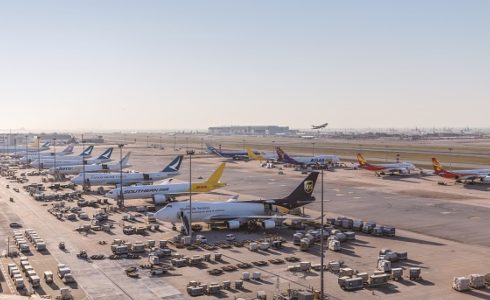George Edmunds, GM Cargo Commercial at Cathay Pacific Cargo, has outlined the challenges posed to the Hong Kong carrier by the global pandemic.
In a Cargo Clan update to customers, Edmunds highlighted the effect of crew quarantine measures which saw a reduction in weekly freighter flights between Hong Kong and the US.
Edmunds wrote:
This continues to be a challenging time for the business as we respond to the ongoing pandemic and in particular the restrictions that are affecting our operations.
The biggest obstacle to normal operations remains the introduction of new crew quarantine measures, which commenced on 20 February. These measures only affect airlines with Hong Kong-based aircrew and so apply to the vast majority of our pilots; therefore, there is an outsized impact on our operations relative to other carriers.
As a result, we flew around 25 per cent less cargo capacity overall in March, with our weekly freighter frequencies between Hong Kong and the US reduced from the usual 34 to around 21-28 flights per week.
This schedule is further reduced this month as crew who have volunteered for the closed-loop operation enter quarantine before a well-earned period of leave. I would like to thank our pilots who volunteered to operate these rosters. Their commitment and resilience has enabled us to operate more flights than we would have been able to otherwise.
The major impact of these quarantine requirements is on our long-haul routes, in particular to Europe, Southwest Pacific and the Americas. We have therefore looked to redeploy more freighters on regional and short-haul routes where closed-loop operations are not required.
Outside of the quarantine restrictions you may have seen that the US Department of Transport has requested that Hong Kong-based airlines file flight schedules in advance of operations.
While this adds administrative burden, it does not affect the number of flights we operate, but there may be some impact on last-minute schedule additions.
Similarly, our freighter operations to India are being disrupted because of schedule filing issues. We are working with the authorities on a resolution to this and operating ad hoc freighters and cargo-only passenger aircraft until a full schedule is confirmed.
We are acutely aware of the impact this is having on our partners and shippers. We apologise for the disruption and thank our customers for their continued support and patience.
These are temporary issues, and once lifted we look forward to restoring our full market presence. In the interim, we are taking measures to offer as much capacity and flexibility as we can, and we will issue updates as soon as we can.
Rising to these challenges requires a huge amount of agility, something that we demonstrated throughout 2020, the most difficult year in Cathay Pacific’s history. This is the key takeaway from our 2020 annual results.
Cargo came to the fore as the prime revenue generator, despite the loss of capacity from our passenger bellies. We have had to learn and respond quickly, and work in new ways. On top of increasing the flying hours of our freighters, we have so far flown more than 6,500 cargo-only passenger flights and we take as much spare capacity as Air Hong Kong has available.
Our future at a group level is secure. To meet some of the overriding short-term challenges and to reduce our overall cash burn, last year we restructured our business and achieved a recapitalisation with the support of our shareholders and the Hong Kong SAR Government. This means we are in a good position to resume all our operations when the effects of the pandemic start to recede.
We are making our own vital contribution to this with the distribution of COVID-19 vaccines. We are proud to have carried more than 15 million doses to date, and look forward to carrying many more.
But we have not lost sight of our long-term objectives, particularly our aim to become more customer-centric through the digitisation of the air cargo industry and our own processes. We have recently taken part in our third IATA ONE Record pilot – the first pilot in our home hub.
ONE Record will become the new industry standard, and its new data handling not only allows for end-to-end transparency, but can also bundle more information into each shipment record, including data on carbon emissions. We intend to play a role in setting future industry standards with our partners. We’re staying agile in the current climate, but always with an eye on the future.
George Edmunds, GM Cargo Commercial at Cathay Pacific Cargo

